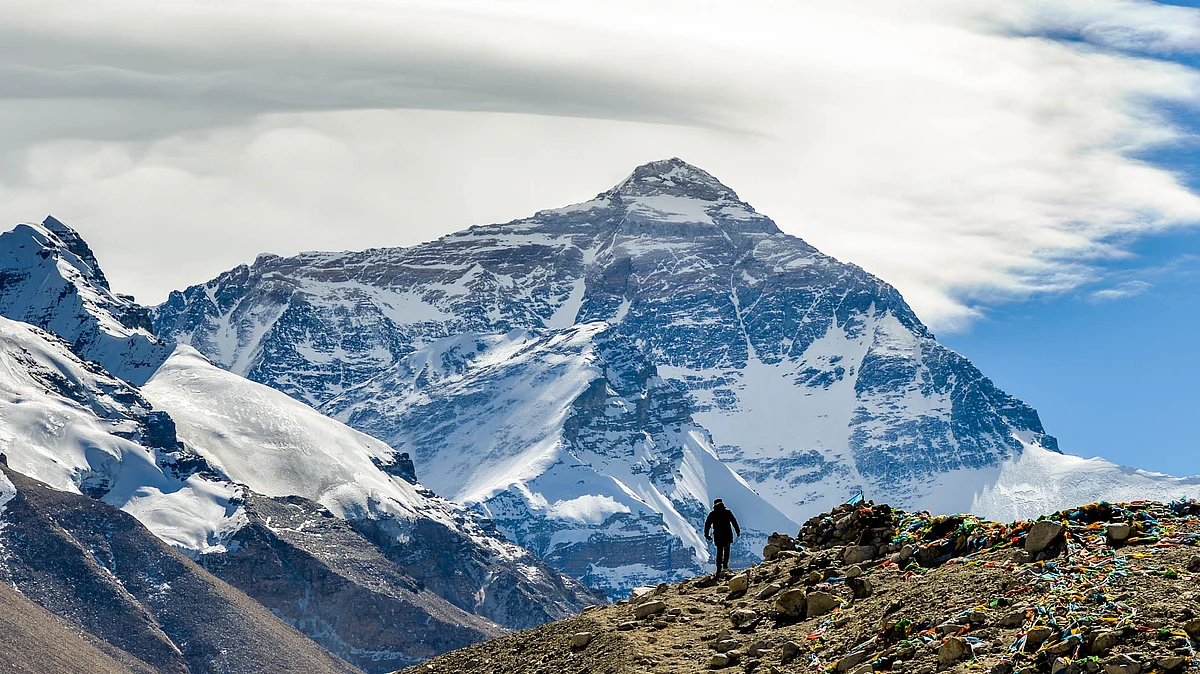Mount Everest death toll increases to 11 as summit becomes latest spot for traffic jam due to overcrowding
Another mountaineer has died after summiting Mount Everest, bringing the death toll for the 2019 climbing season to 11 people

Another mountaineer has died after summiting Mount Everest, bringing the death toll for the 2019 climbing season to 11 people, a Nepal government official confirmed on Tuesday.
American lawyer Christopher John Kulish, 62, died on Monday after reaching the top of Everest on the Nepalese side of the mountain in the morning, Meera Acharya, the Director of Nepal's Tourism Department told CNN.
While descending, he was strong and safely reached the South Col (situated at an altitude of 25,918 feet) late on Monday evening before he suddenly died, she said.
In a statement, the family of the Colorado man said they were "heartbroken" at the news.
"He saw his last sunrise from the highest peak on Earth. At that instant, he became a member of the '7 Summit Club' having scaled the highest peak on each continent," the statement added.
Also on Monday, an Austrian family confirmed the death of one of their relatives. Sixty-four-year-old Ernst Landgraf died on May 23, hours after fulfilling his dream of scaling Everest.

A filmmaker from Canada, Elia Saikaly captured an erie image of a long line of Everest climbers climbing over a mound of snow which ecased the dead corpse of a mountain climber who died on past expeditions. In the image, people are seen stepping over a rope that is attached to the frozen corpse. The identity of the corpse is not known.
He captioned his grim photo: 'Here we all were, chasing a dream and beneath our very feet there was a lifeless soul. Is this what Everest has become?'
The image also brought a lot of attention to the number of people visiting the highest summit in the world causing overcrowding. The overcrowding has been suspected to be the cause of the most recent deaths on the summit.
Overcrowding on the summit is dangerous simply because it is at a precarious height where oxygen is already limited, at which many climbers have to wait in long queues to reach the top.
Mountaineers have suggested difficult weather conditions, a lack of experience and the growing commercialization of expeditions as contributing factors to the backlog.
British climber Robin Haynes Fisher was one of those who had warned of the dangers of overcrowding, before he died from what appeared to be altitude sickness at 28,215 feet, while returning from the summit on May 25.
During the week beginning May 20, crowds of climbers became stuck in a queue to the summit, above the mountain's highest camp at 26,247 feet. The summit of Mount Everest is 29,029 feet high, CNN reported.
Most people can only spend a matter of minutes at the summit without extra oxygen supplies, and the area where mountaineers have been delayed is known to many as the "death zone".
The other people who died are Nepali climbing guide Dhruba Bista who fell ill on the mountain and was transported by helicopter to the base camp, where he passed away on May 24.
Irish climber Kevin Hynes, 56, died in the morning of May 24 on the Tibetan side of Everest in his tent at 22,966 feet.
Two died on May 22 after descending from the summit: Indian climber Anjali Kulkarni, 55, and American climber Donald Lynn Cash, 55.
Kalpana Das, 49, and Nihal Bagwan, 27, both from India, also died on Everest on May 23 on their return from the summit.
Ravi, a 28-year-old Indian climber, died on May 17.
Last week, a search for Irish climber Seamus Lawless, 39, was called off, after the Trinity College Dublin professor fell while descending from the peak.
Lawless is missing, presumed dead.
More than 200 mountaineers have died on the peak since 1922, when the first climbers' deaths on Everest were recorded. The majority of bodies are believed to have remained buried under glaciers or snow.
(with inputs from IANS and the Daily Mail)
Follow us on: Facebook, Twitter, Google News, Instagram
Join our official telegram channel (@nationalherald) and stay updated with the latest headlines
